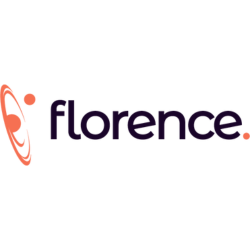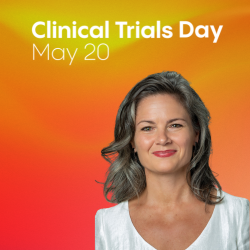This is a sponsored message.
Clinical research operations are becoming increasingly digital. Attended a conference, tuned in to a webinar, or talked to your peers within the industry lately? It’s apparent that clinical trial sites are increasingly investing in technology to digitize and streamline their workflows.
Despite this, many sites continue to rely on traditional paper-based methods or in-house digital documentation systems.
These systems often lock sites into inflexible workflows that hinder their ability to integrate, participate, and connect with sponsors and contract research organizations (CROs) through technology.
The Current State of Digital Clinical Trials
According to research conducted by Florence, there’s an adoption rate of 89% among the top 400 U.S. sites. The adoption of digital document workflows via an electronic investigator site file (eISF) is significant. Beyond this group, the rate of digitization declines significantly, with only approximately 20% of U.S. sites and a mere 15% of international sites embracing digital transformation.
The Mixed Bag of Technology Encountered in a Study
Sponsors and CROs encounter a diverse array of technological readiness among sites participating in their studies. Progressive and larger sites often have their own digital systems and are reluctant to adopt technology deployed by sponsors. These platforms often are siloed and require sponsors to create bespoke monitoring plans and startup plans for every site. Smaller and international sites often depend on outdated paper-based methods or a disjointed array of digital tools. This adds another layer of complexity to study management for sponsors.
Barriers to Digitization
The journey toward fully digital clinical trials presents numerous challenges, including cost, change management, regulatory uncertainties, and limited integration capabilities among vendors. Furthermore, vendors’ ambition to become the “one-platform solution” frequently leads to subpar integration capabilities, restricted interoperability, and increased frustration for both sites and sponsors.
Sponsors and CROs: Facilitating Transition with Flexibility
Resistance often meets efforts to push for digitization in clinical research, with sponsors and CROs mandating specific technologies that often clash with the existing workflows and operations of sites.
These mandates, common in the initial digital wave of the mid-2010s, led to considerable frustration and low adoption rates. Recognizing the limitations of rigid mandates, sponsors and CROs are shifting toward a more thoughtful approach, prioritizing flexibility and integration.
Florence’s Approach to Site Enablement
Leading sponsors and CROs are adopting innovative strategies to support sites in their digital evolution, prioritizing adaptability to meet diverse site needs. Through initiatives like Florence’s Site Enablement Platform, sponsors and CROs can tailor their approach to fit the technological maturity and preferences of each site, ensuring a smoother transition to digital operations.
Florence facilitates connections between sponsors and CROs with three distinct types of sites, ensuring optimal flexibility and interoperability:
- Sites Using Florence’s eBinders eISF: Sponsors can utilize Florence’s SiteLink solution to seamlessly integrate with a site’s current systems, enabling a smooth transfer of documents and data. This integration respects the site’s established workflows while enhancing efficiency.
- Sites Utilizing Another Vendor’s eISF: You can seamlessly integrate SiteLink and Florence’s sophisticated application programming interfaces (APIs) with a site’s preferred eISF system. It requires the site’s eISF vendor to facilitate open integrations through APIs, a standard Florence champions industry-wide. This approach guarantees that sites possess the leverage to require this functionality from their technology vendors, ensuring flexibility and adaptability.
- Sites Without an eISF: In instances where a site has not yet adopted an eISF system, sponsors can deploy Florence’s complete eISF solution. This not only digitizes the site’s workflows, but also empowers them to manage their operations more effectively and
efficiently.
The Benefits of a Flexible Approach
Adopting this flexible, integration-focused strategy yields significant advantages for both sites and sponsors, including:
- Increased Site Capacity: Automating fundamental workflows enhances the operational capabilities of research facilities, enabling them to undertake a greater number of studies and accommodate more trial patients.
- Reduced Risk: Digitizing critical documents and processes enhances safety and compliance, supported by remote monitoring capabilities.
- Accelerated Operations: The streamlined digital interaction between sites and sponsors speeds up study initiation and execution.
- Always-On Connectivity: A digital framework allows for nearly instantaneous communication and collaboration, facilitating real-time study starts.
Moving from strict technology protocols to a collaborative framework, sponsors and CROs can build a more inclusive and efficient digital ecosystem in clinical research. Addressing past technology adoption challenges, they pave the way for a future where digital innovations enhance all aspects of clinical research operations.
Discover how the Florence Site Enablement Platform can transform your approach! Connect with a Florence expert.



